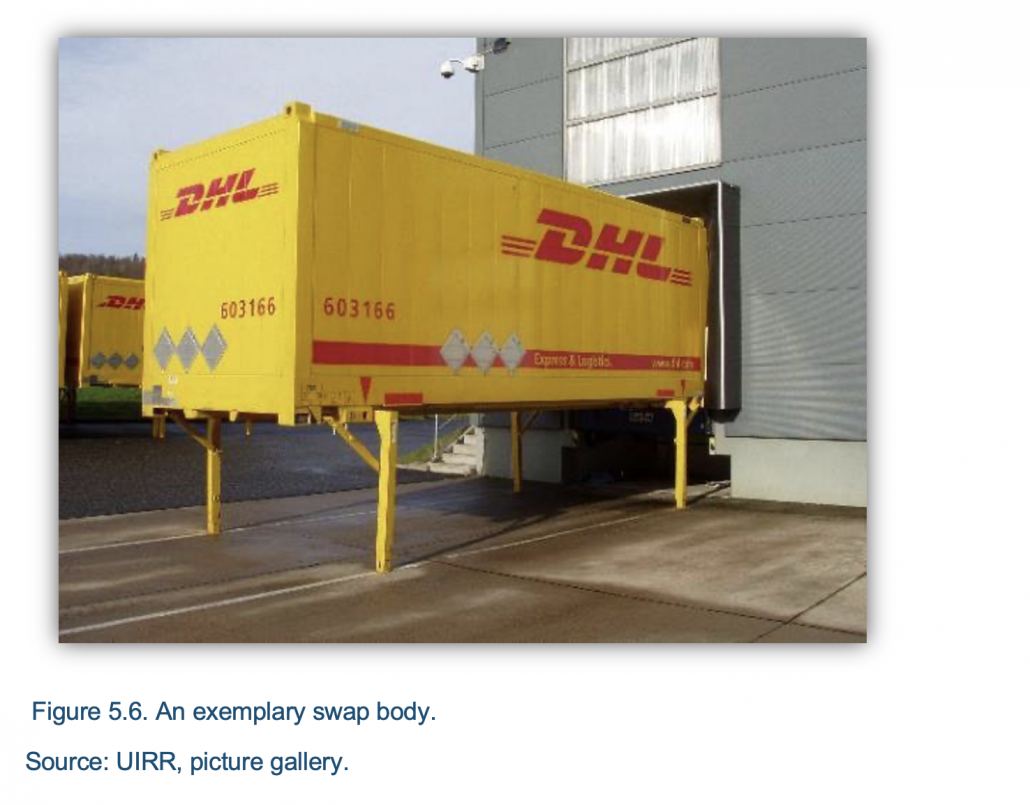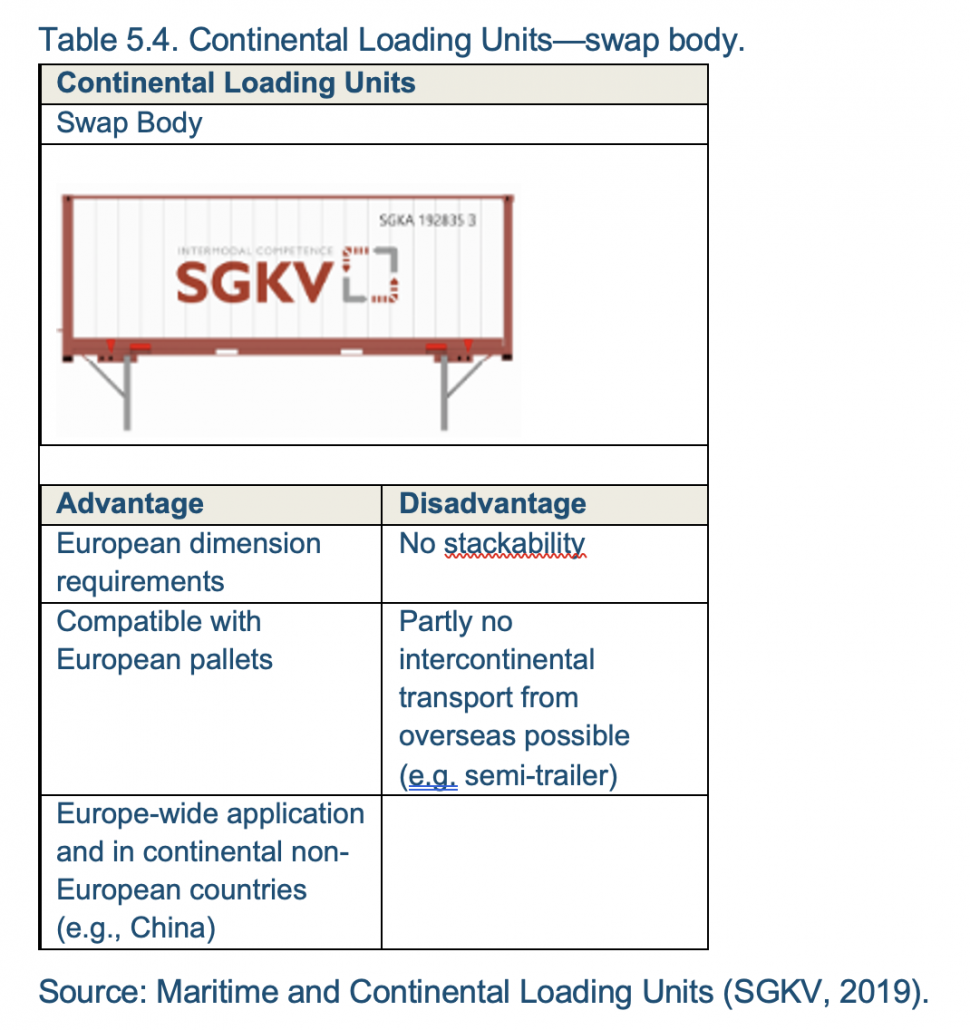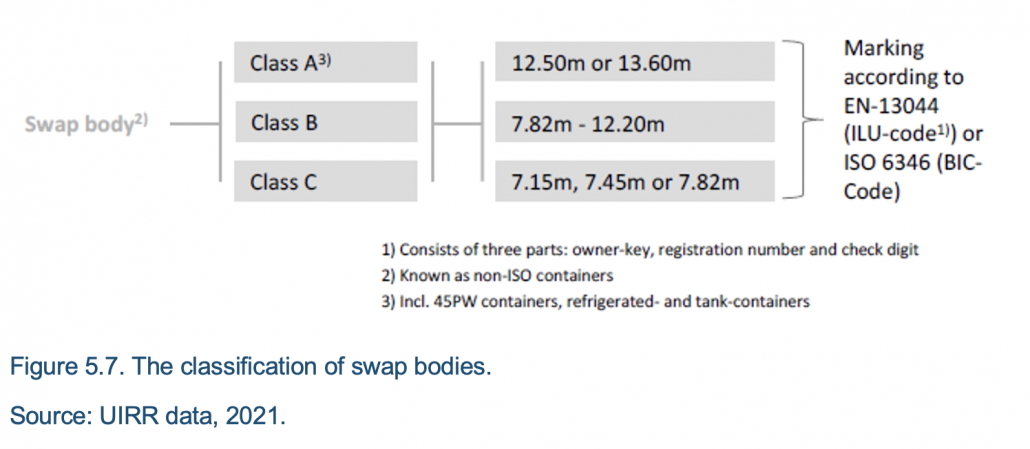Swap bodies, standardized loading units equally suitable for carriage on road vehicles and on railway wagons, can be used in a broad range of situations, are simple in design and reasonably priced. Swap bodies cannot be used in combined rail-sea transport but are sometimes used in transport by inland waterway (UIC 2015). Their main disadvantages are limited stackability and lack of wheels. In the BSR, swap bodies only account for 2% when it comes to CT structure regarding used units. On the European CT market, the market share of swap bodies is 17% (Figure 5.6 and Table 5.4) (UIC, 2020).


The classification of swap bodies is represented in Figure 5.7 (UIC 2020, source UIRR):

Classes A (41%) and B (37%) make up nearly 80% of all swap bodies used in CT, whereas the remaining 21% are class C swap bodies. The average technical transport lifetime for swap bodies is 10.7 years with an average age of 7.6 years (UIC, 2020).